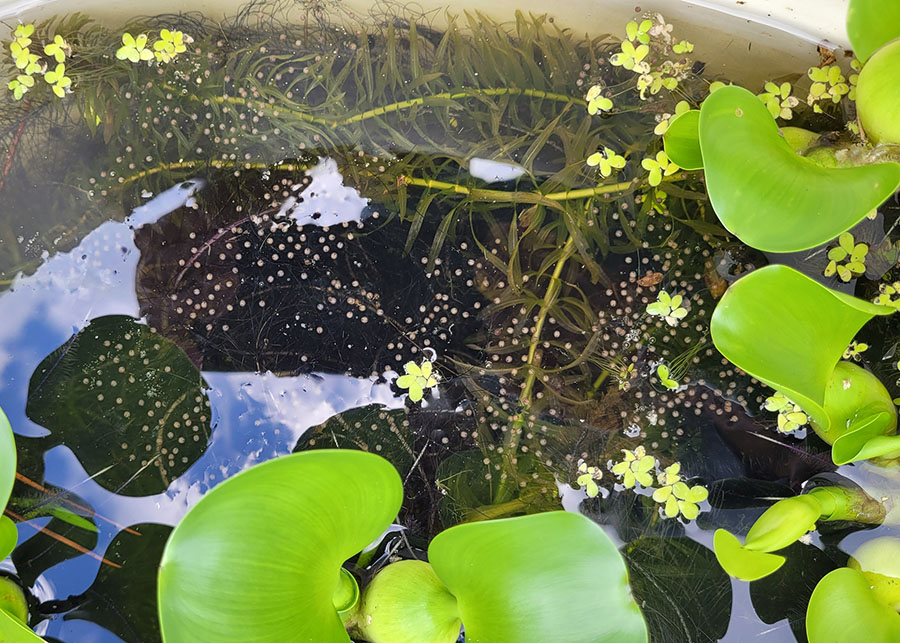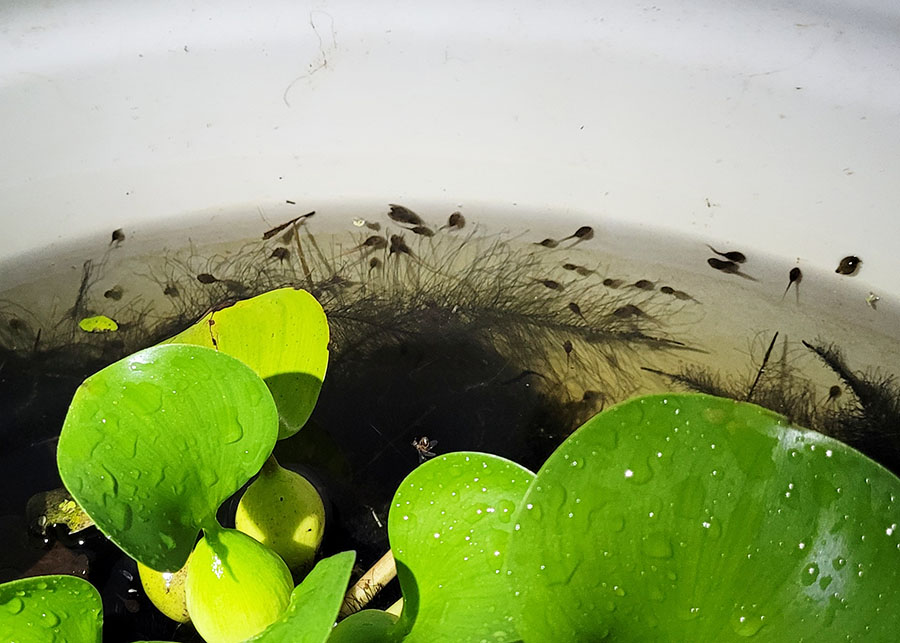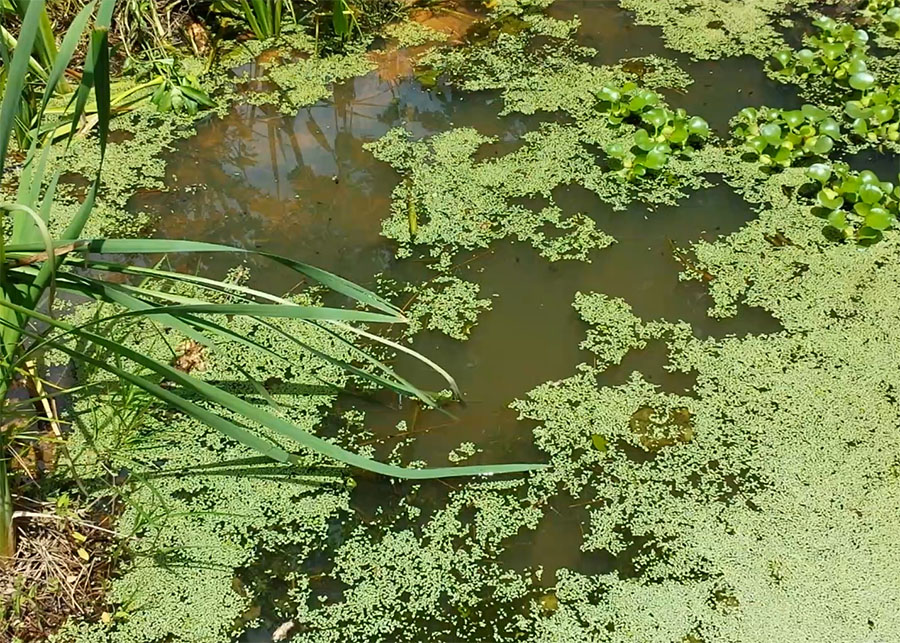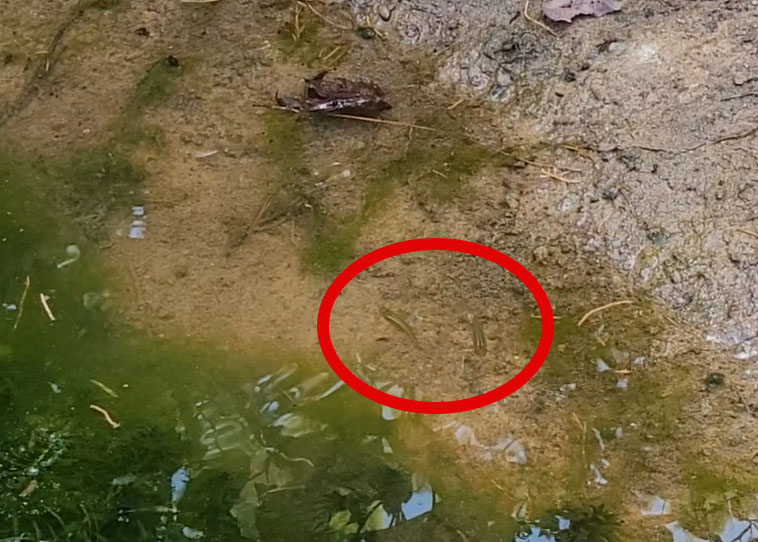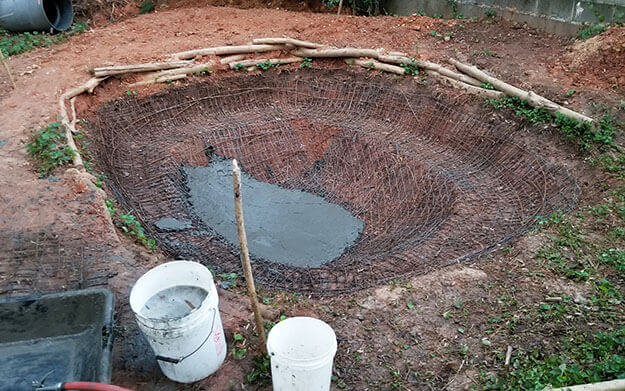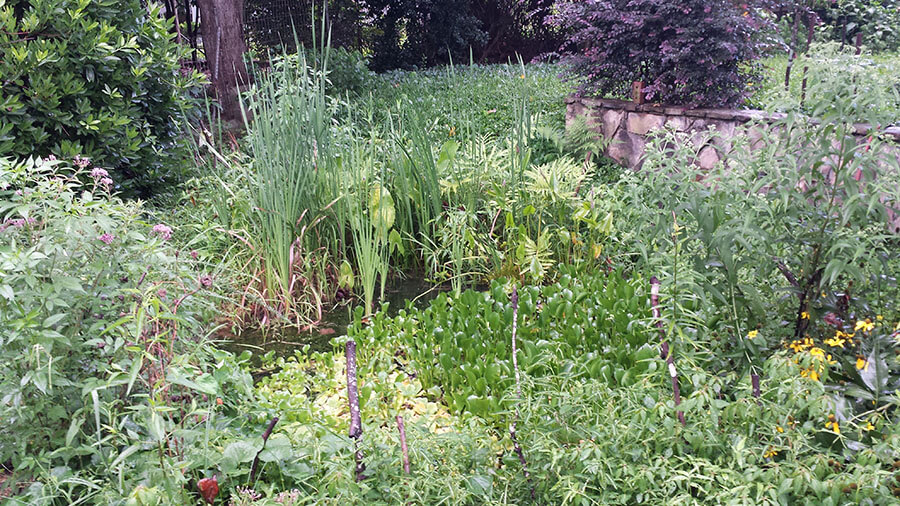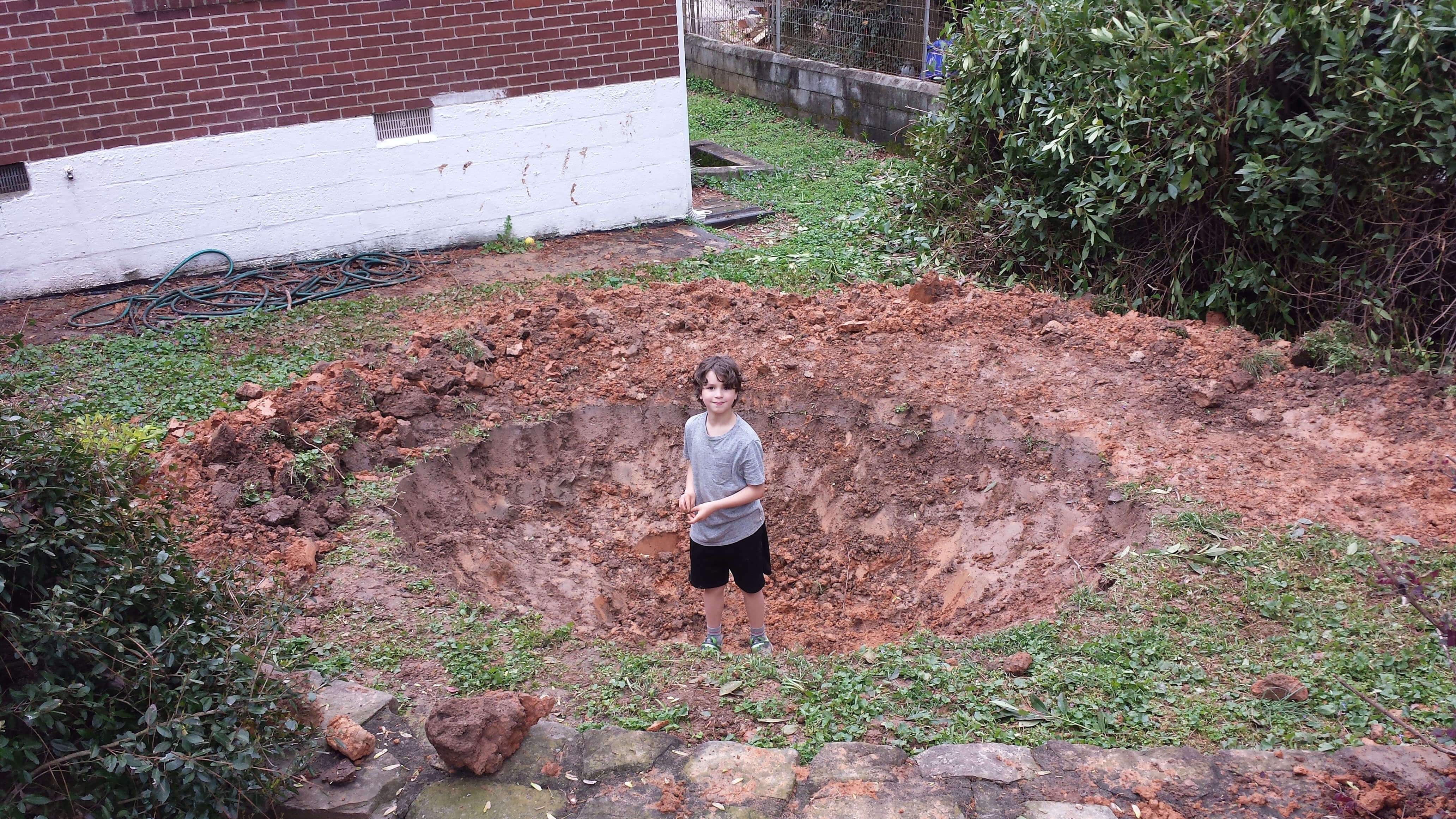Cope’s Gray Tree Frog (Hyla chrysoscelis) apparently lays larger clutches than I have seen in the past. Previously, all the clutches I observed were smaller and broken up into different clumps separated by floating vegetation. I speculated that was because the mating parents were avoiding the larger Green Frogs. I’m not sure why the eggs… Continue reading Frog Eggs: Cope’s Gray Tree Frog (Hyla chrysoscelis)
Tag: tadpole-pond
Videos of Tadpoles Swimming in Experiment Tank #6
At the bottom of this post are two videos of tadpoles of the Green Frog (Lithobates clamitans) swimming in experiment tank #6. One video is from June 27, 2022, and the second is from June 30. Juvenile Green Frogs have laid several clutches of eggs in all eight experiment tanks. Cope’s Gray Tree Frogs (Hyla… Continue reading Videos of Tadpoles Swimming in Experiment Tank #6
Tadpoles Swimming 2018
Here is a video of tadpoles swimming in the first pond in its third month of existence. I incorrectly identified these as tree frog tadpoles, which I now know to be smaller. Based on countless observations over the past four years, I am fairly certain that the tadpoles in this video are those of the… Continue reading Tadpoles Swimming 2018
Mosquitofish Ponds
The ponds at Yalobusha farms produce many tadpoles, especially Green Frogs (Lithobates clamitans) and Cope’s Gray Tree Frogs (Hyla chrysoscelis) and the Eastern Narrow-mouthed Toad (Gastrophryne carolinensis). The ponds are also host to many larvae of the blue dasher dragonflies (Pachydiplax longipennis), which swarm over the katniss and chase each other around the ponds. BUT,… Continue reading Mosquitofish Ponds
Digging the Second Pond
In 2020, I dealt with the stress of running my business during the pandemic by digging a second tadpole pond. Why a Second Pond? For the first ten years I owned the property, my back yard was an ordinary lawn of St. Augustine with fairly low ecological value. The first pond was small, but it… Continue reading Digging the Second Pond
The Pond in High Summer
The pond’s first summer was 2018, just a few months after it was dug, but the sprigs of plants we put in it grew explosively, and the frogs and insects colonized it immediately. It was surreal how quickly the pond established itself because I didn’t use fertilizers or tend the plants or do anything that… Continue reading The Pond in High Summer
Digging the Tadpole Pond
The Yalobusha In the backyard, we dug a Yalobusha, a tadpole place. We dug it after school together between dirt-clod throwing contests.
